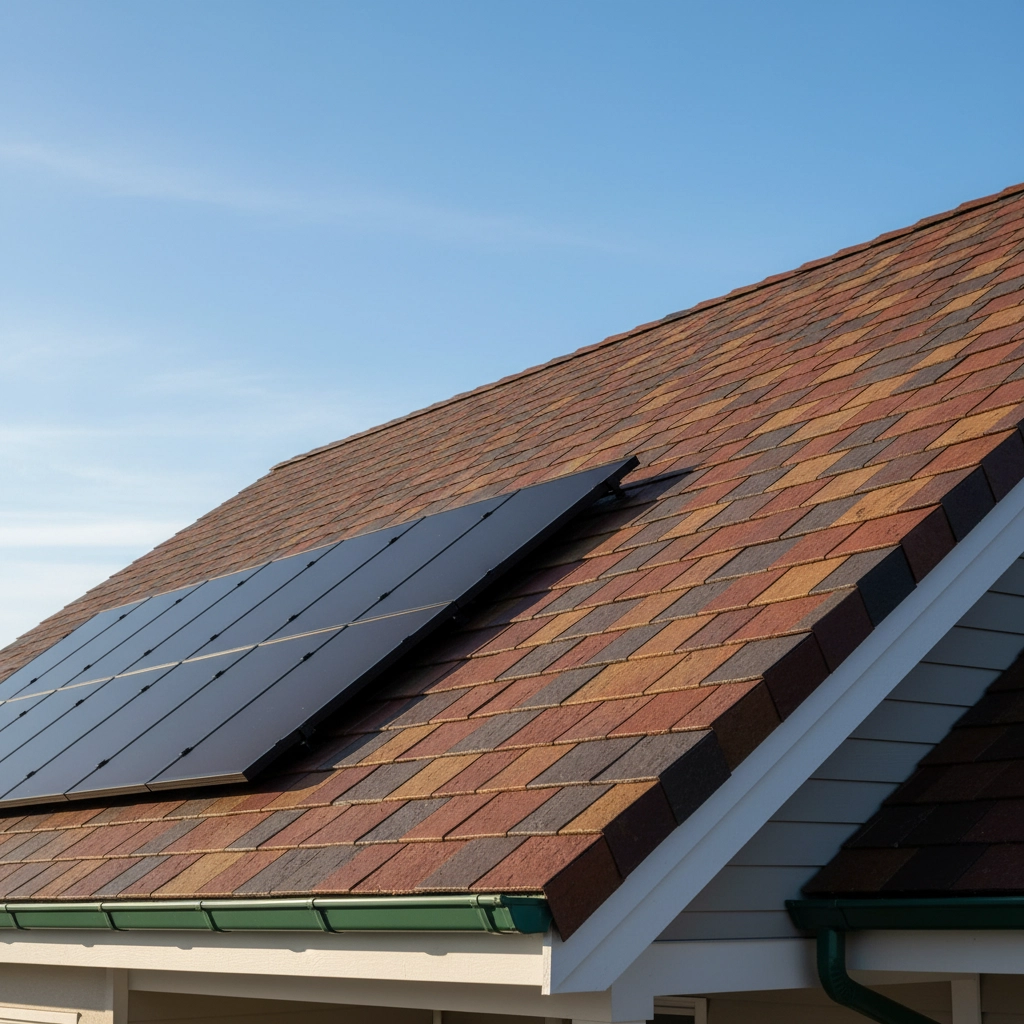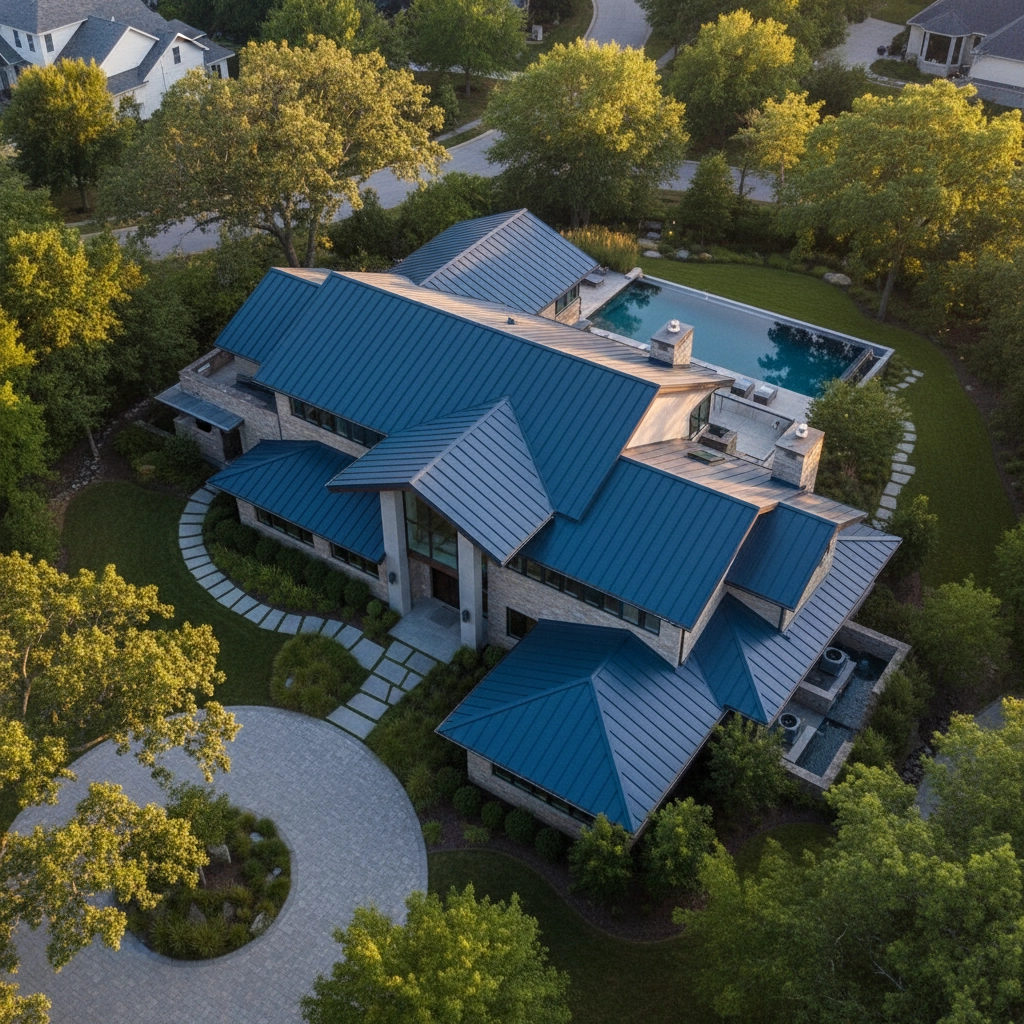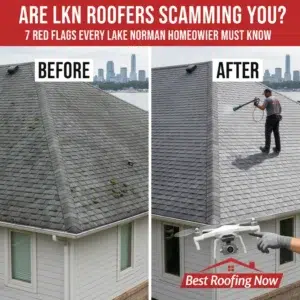
The roofing industry is experiencing a major transformation in 2025. Between rising energy costs, increasingly severe weather patterns, and breakthrough materials innovations, this year has become a turning point for how we think about protecting our homes and buildings. If you're planning a roof replacement or upgrade, understanding these trends isn't just about staying current: it's about making smart investments that'll pay off for decades.
Whether you're dealing with storm damage, planning ahead, or just curious about what's new in roofing, these five trends are reshaping the industry and creating exciting opportunities for property owners who want to get ahead of the curve.
Trend #1: Sustainable & Eco-Friendly Roofing Materials
Sustainability isn't just a buzzword anymore: it's becoming the standard. More homeowners and building owners are choosing eco-friendly materials that reduce environmental impact while delivering real performance benefits.
What's Hot Right Now:
- Recycled shingles made from plastic waste and rubber
- Low-VOC (volatile organic compound) roofing materials that improve indoor air quality
- Cool roofs with reflective coatings that reduce urban heat islands
- Solar-ready materials designed for easy integration
The beauty of sustainable roofing goes beyond feeling good about your environmental footprint. These materials often outperform traditional options. Cool roofs, for example, can reduce cooling costs by 10-15% in hot climates by reflecting more sunlight and absorbing less heat.
The Practical Side: Recycled shingles can cost about the same as traditional asphalt but last 25-30% longer. Plus, many sustainable options qualify for tax credits and rebates that can offset the initial investment.

Trend #2: Smart Roofing & Sensor Technology
Your roof is getting smarter, and it's about time. Smart roofing technology is moving beyond the experimental phase into practical, affordable solutions that save money and prevent headaches.
Current Smart Features:
- Leak detection sensors that alert you to moisture before damage occurs
- Thermal imaging integration that identifies problem areas
- Weather monitoring systems that track storm damage in real-time
- IoT connectivity that integrates with home automation systems
The real game-changer? Early detection. A small leak that goes unnoticed for months can cause thousands in damage. Smart sensors catch problems when they're still $200 fixes instead of $20,000 disasters.
Cost vs. Benefit: A basic smart monitoring system runs about $800-1,500 installed, but can prevent damage that costs 10-20 times more. The sensors typically pay for themselves within the first few years through prevented repairs and insurance savings.
Trend #3: Green Roofs & Living Systems
Green roofs aren't just for fancy office buildings anymore. Living roof systems are becoming accessible for residential properties, offering incredible benefits that go way beyond looks.
Types of Green Roofing:
- Extensive systems (lightweight, low-maintenance ground cover)
- Intensive systems (full gardens with trees and shrubs)
- Semi-intensive systems (the middle ground with moderate plant diversity)
- Modular systems (easier installation and maintenance)
The Benefits Are Real: Green roofs provide natural insulation that can reduce heating and cooling costs by 25-30%. They also manage stormwater runoff, reduce noise pollution, and can increase property values significantly.
What About Maintenance? Modern green roof systems are surprisingly low-maintenance. Extensive systems typically need only 2-3 professional visits per year, similar to regular roof inspections.
Trend #4: Enhanced Durability & Weather Resistance
With extreme weather becoming the new normal, durability isn't optional: it's essential. The focus has shifted from "good enough" to "built to last through anything."
Advanced Materials Leading the Way:
- Impact-resistant shingles rated for severe hail
- Enhanced underlayment with superior water barriers
- Wind-resistant installations rated for 130+ mph gusts
- Fire-resistant materials for wildfire-prone areas
Regional Considerations Matter: Storm-prone areas are seeing huge demand for Class 4 impact-resistant materials, while coastal regions prioritize salt-air corrosion resistance and high wind ratings.
The investment in weather-resistant materials typically adds 15-25% to project costs but can reduce insurance premiums by 10-30% annually. More importantly, they prevent the stress and expense of repeated storm repairs.

Trend #5: Design, Color & Aesthetic Innovation
Roofs are no longer just functional: they're becoming design statements. Property owners are embracing bold choices that enhance curb appeal and express personal style.
Popular Design Trends:
- Mixed materials (combining metal, tile, and shingles)
- Bold colors beyond traditional grays and browns
- Textured finishes that add visual depth
- Seamless solar integration that maintains clean lines
Color Psychology in Roofing: Lighter colors reflect heat and reduce cooling costs, while darker colors absorb warmth and can help in colder climates. Popular choices include deep blues, forest greens, and warm earth tones that complement natural surroundings.
Architectural Innovation: Modern roof shapes are getting more creative, with butterfly roofs, shed-style designs, and mixed-pitch configurations creating striking visual profiles while optimizing for solar placement and weather performance.
Commercial Roofing: Where Innovation Meets Scale
Commercial properties have unique needs and opportunities when it comes to trending roofing solutions.
Commercial-Specific Trends:
- TPO and EPDM membranes with enhanced UV resistance
- Reflective "cool roof" coatings that can reduce building temperatures by 10-15 degrees
- Modular green roof systems designed for easy maintenance access
- Integrated solar arrays with battery storage systems
ROI Considerations: Commercial buildings typically see faster payback periods for sustainable technologies due to scale and usage patterns. A cool roof system might pay for itself in 3-5 years through energy savings alone.
Maintenance Advantages: Smart monitoring systems are particularly valuable for commercial properties where roof access is limited and damage can affect business operations.
How to Choose Which Trends to Adopt
Not every trend makes sense for every property. Here's a practical decision framework:
Climate First: Your local weather patterns should drive material choices. Hurricane-prone areas need different solutions than drought-prone regions.
Budget Reality Check: Prioritize trends that offer clear ROI. Smart sensors and energy-efficient materials often pay for themselves, while aesthetic upgrades are pure preference.
Property Type Considerations:
- Single-family homes: Focus on durability and energy efficiency
- Multi-family properties: Prioritize low maintenance and long-term value
- Commercial buildings: Emphasize energy savings and operational efficiency
Future-Proofing Questions:
- Will this choice support solar installation later?
- How will this perform as weather patterns continue changing?
- What's the maintenance requirement over 20-30 years?
Making Smart Roofing Decisions in 2025
The roofing industry's evolution creates real opportunities for property owners who understand these trends. Whether you're dealing with immediate repairs or planning future upgrades, the key is matching innovative solutions to your specific needs and circumstances.
The most successful projects combine multiple trends strategically. For example, choosing sustainable materials with smart monitoring capabilities, or selecting weather-resistant options with aesthetic appeal.
Ready to explore how these trends might work for your property? The roofing experts at Best Roofing Now can help you navigate these options and create a solution that fits your needs, budget, and long-term goals. From residential roofing projects to commercial installations, we stay current with industry innovations so you can make informed decisions about one of your property's most important systems.
Contact us today for a consultation and discover which 2025 roofing trends make the most sense for your specific situation.





